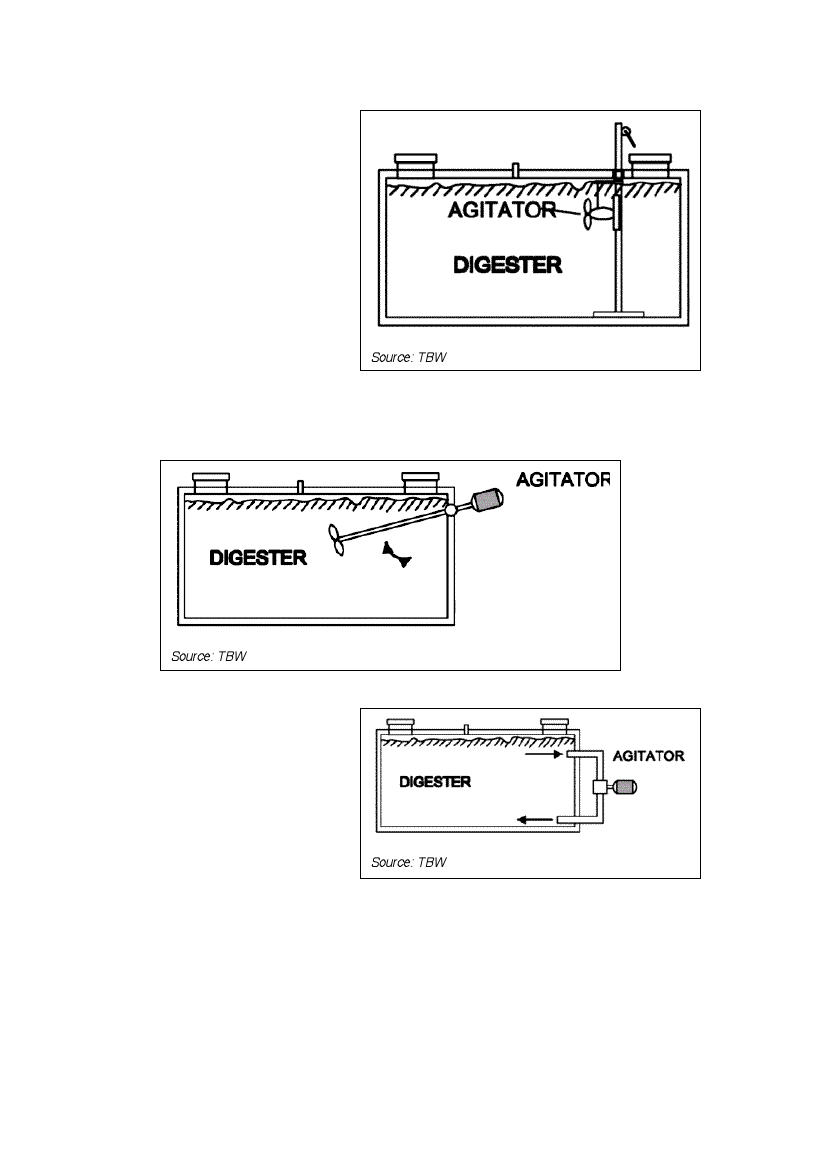
Shaft-driven rotors
The mode of operation of a shaft-
driven rotor is comparable to that
of a submerged engine with rotor,
only that the rotor is driven via
shaft by an engine or by hand.
The shaft should be movable in
height and in angle to allow a
mixing throughout the digester.
The shaft should be long enough
to reach both swimming and
sinking layers.
The rotor shaft can be inserted in
two principle ways:
• Through the digester wall
below the slurry level with
water-tight sealing
• Through the gas-holder
with gas-tight sealing
Figure 35: Submerged motor with rotor stirring
Source: TBW
Figure 36: Shaft-driven rotor
Source: TBW
Hydraulic mixing
With a strong pump the whole
substrate can be put in motion,
provided the intake and outlet of
the pump are placed in a way that
corresponds with the digester
shape. These pumps are often
placed in a central position to cater
for other tasks.
Figure 37: Hydraulic mixing
Source: TBW
Mixing through injection of biogas
A piping system with gas-jets is installed at the bottom of the digester. The raising biogas
bubbles provide a gentle mixing of the substrate. The main problem with these systems is
slurry entering into the piping system. This can be avoided by fixing pieces of elastic hose-
pipe with stainless steel hose coupling to the jets.
Hydraulic mixing by injecting biogas should not be used if the formation of swimming layers
is a prevailing problem. Gas bubbles attach themselves to larger fibrous particles and lift
them upwards, thus speeding up the formation of a swimming layer. Chopping up the
substrate by means of chopper pumps or chopper rotors can only partly solve this problem.
57